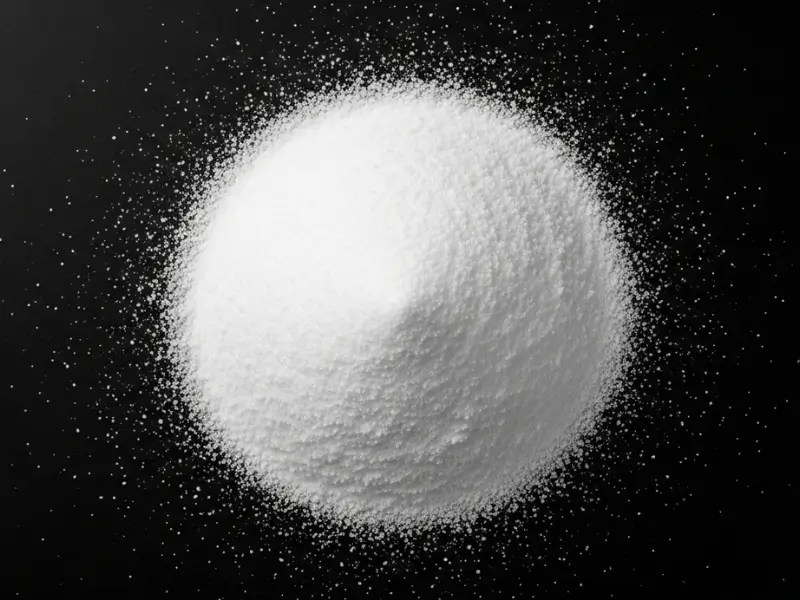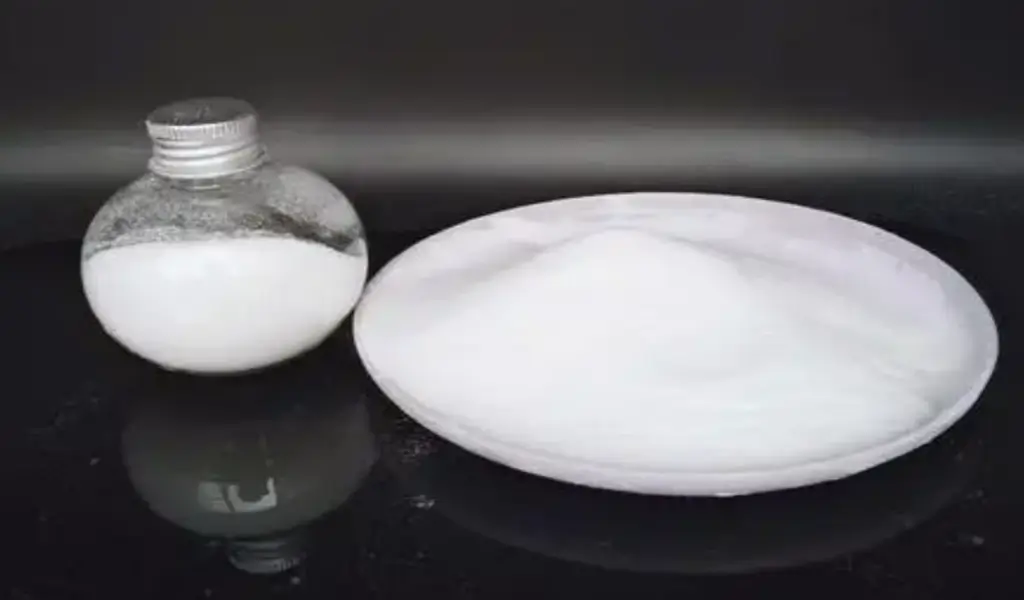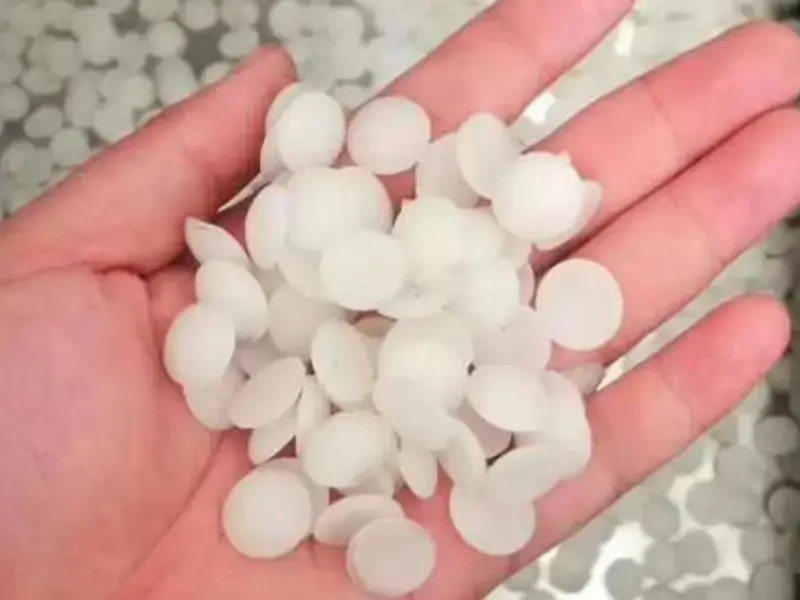Choose Hypalon for superior UV, chemical, and weather resistance—ideal for harsh environments. Pick PVC for lower cost and flexibility in mild conditions. Base your choice on durability needs, budget, and application (e.g., roofing, boats, or inflatables).
1.Introduction to Hypalon and PVC
Let’s dive right in. Hypalon and PVC are two widely used materials, each with unique properties suitable for various applications. Hypalon, a brand name for chlorosulfonated polyethylene, is a synthetic rubber renowned for its exceptional durability and resistance to chemicals, UV light, and temperature extremes. On the other hand, PVC, or polyvinyl chloride, is a versatile plastic used across numerous industries, particularly in plumbing and construction due to its lightweight nature and cost-effectiveness.
Understanding these materials is crucial, especially in industries where performance may directly influence the safety and efficiency of operations.
What’s the real story? Both materials have their strengths. Hypalon is ideal for outdoor applications like inflatable boats and weather-resistant coverings. Its resilience ensures longevity, even in harsh environments. Meanwhile, PVC shines in plumbing and construction applications, where its resistance to corrosion and ease of installation are paramount. With growing environmental concerns, both materials have adapted, with manufacturers exploring more sustainable options.
Ultimately, the choice between Hypalon and PVC hinges on the project’s demands. Recognizing the key differences and similarities enables stakeholders to select the most appropriate material.
| Material | Key Properties | Typical Applications |
|---|---|---|
| Hypalon | Chemical resistance, UV stability | Marine, weather-resistant products |
| PVC | Lightweight, cost-effective | Plumbing, construction, packaging |
2.Material Properties Comparison
Ready for the good part? When comparing Hypalon and PVC, understanding their material properties is essential. Each has distinct characteristics that cater to specific needs and applications.
Hypalon exhibits exceptional durability. This material can withstand harsh environmental factors such as extreme temperatures and corrosive chemicals. For instance, in marine applications, Hypalon resist UV degradation, ensuring that products like inflatable boats maintain structural integrity over time. Furthermore, Hypalon’s flexibility without cracking makes it a preferred choice for items exposed to continuous movement or stress.
On the flip side, PVC offers advantages in terms of lightweight construction and ease of installation. This plastic material is often used in plumbing systems due to its resistance to corrosion and chemicals. Its lightweight nature makes it easier to transport and install, saving both time and labor costs. However, while PVC has a competitive price point, it does have limitations regarding extreme temperatures and prolonged UV exposure.
What about the data? Studies show that while Hypalon products may come with a higher upfront cost, their durability can lead to lower long-term maintenance expenses. Conversely, PVC’s lower initial cost makes it accessible for various applications, yet it may require more frequent replacements, significantly affecting long-term financial viability.
| Property | Hypalon | PVC |
|---|---|---|
| Durability | High | Moderate |
| Flexibility | Excellent | Good |
| Chemical Resistance | Superior | Good |
| UV Resistance | Excellent | Fair |
3.Cost Analysis of Hypalon vs. PVC
Here’s where it gets interesting… The cost of materials like Hypalon and PVC can vary significantly based on several factors. Understanding these can help in budgeting for projects effectively.
Hypalon typically commands a premium price due to its advanced material characteristics. While the initial expense may deter some, consider the long-term savings. Industries investing in Hypalon for applications like roof coverings or outdoor equipment find that the durability of the material pays off over time, reducing replacement and maintenance costs.
Conversely, PVC materials are generally more affordable, making them a popular choice for short-term projects. Its widespread availability and lower manufacturing costs offer immediate savings. Nevertheless, poor performance in extreme conditions may lead to increased costs in the long run. For example, projects requiring regular replacements due to material failure can quickly accumulate costs that surpass the initial savings.
Analyzing specific applications provides further insight. The construction industry often chooses PVC for plumbing due to its lower cost and sufficient lifespan. In contrast, industries requiring durable goods, such as marine or outdoor equipment manufacturers, may opt for Hypalon despite higher initial costs to ensure product longevity and performance.
Before making a choice, consider the total cost of ownership, which includes installation, maintenance, and replacement costs. The right decision may save you money down the line.
| Cost Factors | Hypalon | PVC |
|---|---|---|
| Initial Cost | High | Low |
| Long-Term Maintenance | Low | High |
| Total Cost of Ownership | Competitive | Variable |
4.Environmental Impact
But here’s the kicker… Sustainability is becoming increasingly important in material selection. Both Hypalon and PVC have environmental implications that warrant consideration.
Hypalon’s production process is more environmentally friendly than one might assume. Manufacturers have been increasingly adopting eco-friendly practices, focusing on recycling and minimizing waste. Additionally, Hypalon’s durability means that products are less likely to end up in landfills within a short time frame.
However, the environmental footprint of Hypalon shouldn’t overshadow the robust recycling potential of PVC. While traditionally perceived as less sustainable, advancements have been made in PVC recycling processes. This material can be repurposed into new products, reducing its overall environmental impact and supporting a circular economy.
What’s the takeaway? An informed decision doesn’t solely weigh short-term costs or product performance. Considering the long-term environmental footprint can lead companies to make more responsible choices. Evaluating both materials for sustainability opens discussions about recycling programs and responsible sourcing.
Choosing materials that are both efficient in performance and low in environmental impact can attract eco-conscious customers, bolstering brand loyalty.
| Material | Sustainability Practices | Recycling Potential |
|---|---|---|
| Hypalon | Eco-friendly production | Limited recycling |
| PVC | Improved recycling methods | High potential |
5.Performance in Harsh Conditions
Ready for the next chapter? Performance in harsh conditions is often a decisive factor in material selection. Let’s examine how Hypalon and PVC stand up to the elements.
Hypalon’s reputation for superior performance in extreme temperatures sets it apart from several alternatives. In marine applications, for example, Hypalon remains flexible and resistant to cracking, even in frigid conditions. The material is also known for its exceptional UV resistance, which is crucial for outdoor products. Whether it’s an inflatable boat or a cover for industrial equipment, Hypalon’s durability ensures that it excels where many others fail.
In stark contrast, PVC exhibits limitations in extreme environments. While it performs adequately in moderate conditions, it may become brittle in freezing temperatures and degrade with prolonged UV exposure. This means that items made of PVC may not last long if regularly exposed to harsh weather conditions. As a result, industries seeking materials for outdoor applications must take these performance factors into account.
What’s the bottom line? When considering performance in harsh environments, Hypalon outmatches PVC, making it the preferred choice for clients prioritizing longevity and reliability. Understanding these performance characteristics allows businesses to make informed choices based on their operational requirements.
| Condition | Hypalon | PVC |
|---|---|---|
| Extreme Temperatures | Excellent | Limited |
| UV Resistance | Superior | Moderate |
| Flexibility | High | Fair |
6.Applications of Hypalon
What’s the real story with Hypalon applications? This versatile material is utilized across various industries, and its performance characteristics make it a leading choice for demanding environments.
In marine applications, Hypalon is favored for inflatable boats, sails, and other watercraft components. Its resistance to UV radiation and harsh chemicals ensures that products maintain their integrity despite continuous exposure to the elements. As an example, many high-end yacht manufacturers utilize Hypalon for their inflatable lifeboats, ensuring safety and reliability.
Additionally, Hypalon’s properties make it an excellent option for industrial goods, such as hoses and liners, that must endure tough operating conditions. Manufacturers can produce products that resist erosion and abrasions, maximizing the lifespan of these tools.
Moreover, Hypalon is often used in outdoor recreation products like tents and backpacks. Its durability ensures that gear used in rough conditions stands up to wear and tear, providing the necessary reliability for adventure seekers.
What’s interesting here is that Hypalon can be processed and customized to suit different specifications, aiding manufacturers in creating specialized products for various niche markets.
| Application | Hypalon Benefits |
|---|---|
| Marine | UV Resistant, Durable |
| Industrial | Erosion Resistant |
| Outdoor Recreation | Lengthy Lifespan, Customization |
7.Applications of PVC
This is where it gets interesting… PVC’s versatility means it’s employed across numerous industries, particularly in plumbing, construction, and consumer goods.
In the plumbing sector, PVC is widely used for pipes and fittings due to its lightweight nature and cost-effectiveness. It’s resistant to corrosion and easy to install, making it a popular choice for both residential and commercial applications. Research displays that in plumbing systems, PVC pipes can last over 50 years if installed correctly, minimizing replacements and maintenance.
Beyond plumbing, PVC is integral to the construction industry, being used in doors, windows, and flooring. Its availability and low manufacturing cost allow construction companies to provide quality products at competitive prices. Additionally, PVC’s insulative properties make it suitable for electrical applications, protecting against shocks.
In consumer goods, PVC appears in items like toys and packaging. While there are discussions regarding the safety of PVC in food packaging, advancements in production techniques have led to safer alternatives that comply with health standards.
What’s more, deciding to use PVC materials can drive cost efficiency while meeting regulatory standards, making it a desirable option across multiple applications.
| Application | PVC Benefits |
|---|---|
| Plumbing | Cost-Effective, Durable |
| Construction | Versatile, Insulative |
| Consumer Goods | High Availability |
8.Installation Processes
Are you ready to dive into installation? The installation processes for Hypalon and PVC differ significantly, impacting project timelines and requirements.
Installing Hypalon products generally involves specialized techniques, requiring skilled labor familiar with the material. For instance, inflatable boats constructed with Hypalon often use adhesives and coatings that must cure properly for optimal performance. This necessitates trained personnel to ensure that the installation meets quality standards, adding time to project completion.
In contrast, PVC’s lightweight construction allows for easier handling and installation. Many can install PVC pipes with basic tools, reducing labor costs and project timelines. Its compatibility with various fittings makes it easier for technicians to assemble plumbing systems, leading to quicker project completion.
What’s the takeaway? When planning your project, consider the labor requirements and potential challenges associated with each material’s installation. While Hypalon may come with a steeper learning curve, it offers outstanding performance in demanding environments. Conversely, PVC shines in ease and speed but may not provide the same level of long-term reliability.
| Material | Installation Ease | Skill Requirement |
|---|---|---|
| Hypalon | Moderate | High |
| PVC | Easy | Low |
9.Maintenance Requirements
Let’s talk maintenance. The upkeep necessary for Hypalon and PVC products can dramatically affect their longevity and overall performance.
Hypalon products typically require regular inspections to maintain their condition. For example, any seams in Hypalon inflatable boats need reinforcement to prevent leaks. Cleaning is also important; using mild soap and water ensures that dirt and grime do not accumulate, degrading the material.
Conversely, PVC maintenance is relatively straightforward. While it’s wise to inspect plumbing systems for leaks or blockages periodically, the overall upkeep is minimal compared to Hypalon. If a section becomes damaged, replacing a piece of PVC pipe is typically an easy task requiring minimal skill.
What’s vital here? Regular maintenance can extend the lifespan of any material. Both Hypalon and PVC require attention, but the type and depth of maintenance work can vary. Understanding these requirements aids in projecting ongoing costs and labor needs.
| Material | Maintenance Level | Typical Maintenance Actions |
|---|---|---|
| Hypalon | Moderate | Regular inspections, cleaning |
| PVC | Low | Occasional checks, replacements |
10.User Experiences and Reviews
What do the users have to say? User feedback provides insights into the practical experience of working with Hypalon and PVC materials.
Hypalon users frequently highlight the durability and performance of products in challenging conditions. Their outdoor gear, such as inflatable kayaks, receives praise for standing the test of time, often lasting several years with minimal degradation. Customers express satisfaction with the investment, valuing long-lasting products that don’t require frequent replacement.
In contrast, PVC users often speak to its affordability and versatility. Plumbing professionals appreciate the ease of installation and low costs, especially for large projects. However, some do express concerns about long-term durability in harsh environments. Reports show that while PVC works well in moderate conditions, it may not outperform alternatives during extreme weather conditions.
What’s worth noting is that customer experiences often include considerations regarding the intended application. For high-stakes environments like marine applications, Hypalon’s benefits frequently outweigh the costs. In contrast, for less critical uses, PVC’s affordability makes it a strong candidate.
| Material | User Sentiment | Common Applications |
|---|---|---|
| Hypalon | High satisfaction | Outdoor, Marine |
| PVC | Favorable but mixed reviews | Plumbing, Construction |
11.Expert Recommendations
Ready for insights? Experts in the field provide valuable guidance regarding when to use Hypalon versus PVC, assisting businesses in navigating their choices effectively.
In outdoor, marine, or industrial applications, experts frequently recommend Hypalon. Its superior durability in harsh conditions makes it the ideal choice for products needing resilience. Manufacturers focused on high-performance items, such as inflatable watercraft, are likely to find Hypalon advantageous.
On the other hand, experts often favor PVC for plumbing and construction projects where cost is a significant concern. Its lightweight design facilitates easier installation, making it a logical choice for residential projects or temporary installations. Industry professionals advise businesses to factor in the initial costs versus long-term performance when deciding between the two materials.
What’s the overall consensus? The selection of materials evolves based on specific project requirements. Consulting with experts ensures that decisions align with operational goals and budget constraints, leading to successful outcomes.
| Material | Recommended Use Case | Expert Opinion |
|---|---|---|
| Hypalon | Marine, Industrial | High durability needed |
| PVC | Plumbing, Construction | Cost-effective choice |
12.Future Trends in Material Technology
This is where innovation shines. The landscape surrounding Hypalon and PVC is continuously evolving, driven by advancements in technology and shifts in consumer preferences.
For Hypalon, manufacturers are increasingly focusing on sustainable production techniques. This involves reducing waste and utilizing environmentally friendly alternatives in the manufacturing processes, appealing to eco-conscious consumers. The future suggests potential developments in formulation technology, enhancing the performance characteristics of Hypalon-based products.
PVC is also experiencing a transformation. The push for sustainability has garnered attention towards improved recycling methods, making it a more viable option for environmentally responsible companies. Enhanced formulations are also being developed, balancing performance with safety standards, particularly in consumer goods.
What’s clear is that both materials are adapting to meet the demands of modern industries. As technology progresses, the performance and environmental impacts of both Hypalon and PVC will continue to improve, offering better solutions for users.
| Material | Key Innovations | Future Outlook |
|---|---|---|
| Hypalon | Sustainable production techniques | Enhanced durability |
| PVC | Improved recycling methods | Increased safety standards |
13.Conclusion: Making the Right Choice
As we wrap up, it’s crucial to emphasize that choosing between Hypalon and PVC depends greatly on your specific needs. Each material brings its own set of advantages and disadvantages that can affect your project’s performance, costs, and sustainability.
Hypalon emerges as a leader in applications requiring exceptional durability and performance in extreme conditions. On the other hand, PVC stands out in contexts where cost efficiency and ease of use are paramount. The significance of understanding the nuances between these materials plays a critical role in decision-making.
As this industry continues to evolve, staying updated on trends and innovations remains essential. This will not only enhance your material selection process but also empower you to make informed, strategic choices.
14.FAQ Section
Q1: What is Hypalon?
Hypalon is a synthetic rubber known for its exceptional chemical resistance and durability, commonly used in outdoor and marine applications.
Q2: How does PVC work in plumbing projects?
PVC functions as a piping material that is lightweight, durable, and resistant to corrosion, making it ideal for plumbing systems.
Q3: What are the main differences between Hypalon and PVC?
Hypalon is more durable and chemical-resistant, while PVC is lighter and often less expensive, with specific applications tailored to each material.
Q4: How can I maintain Hypalon products?
Regular cleaning with mild soap and water, along with inspecting for wear, helps maintain Hypalon products’ integrity and lifespan.
Q5: What should I consider when choosing between Hypalon and PVC?
Consider factors like the application environment, required durability, cost, and maintenance needs to determine the best material for your project.





